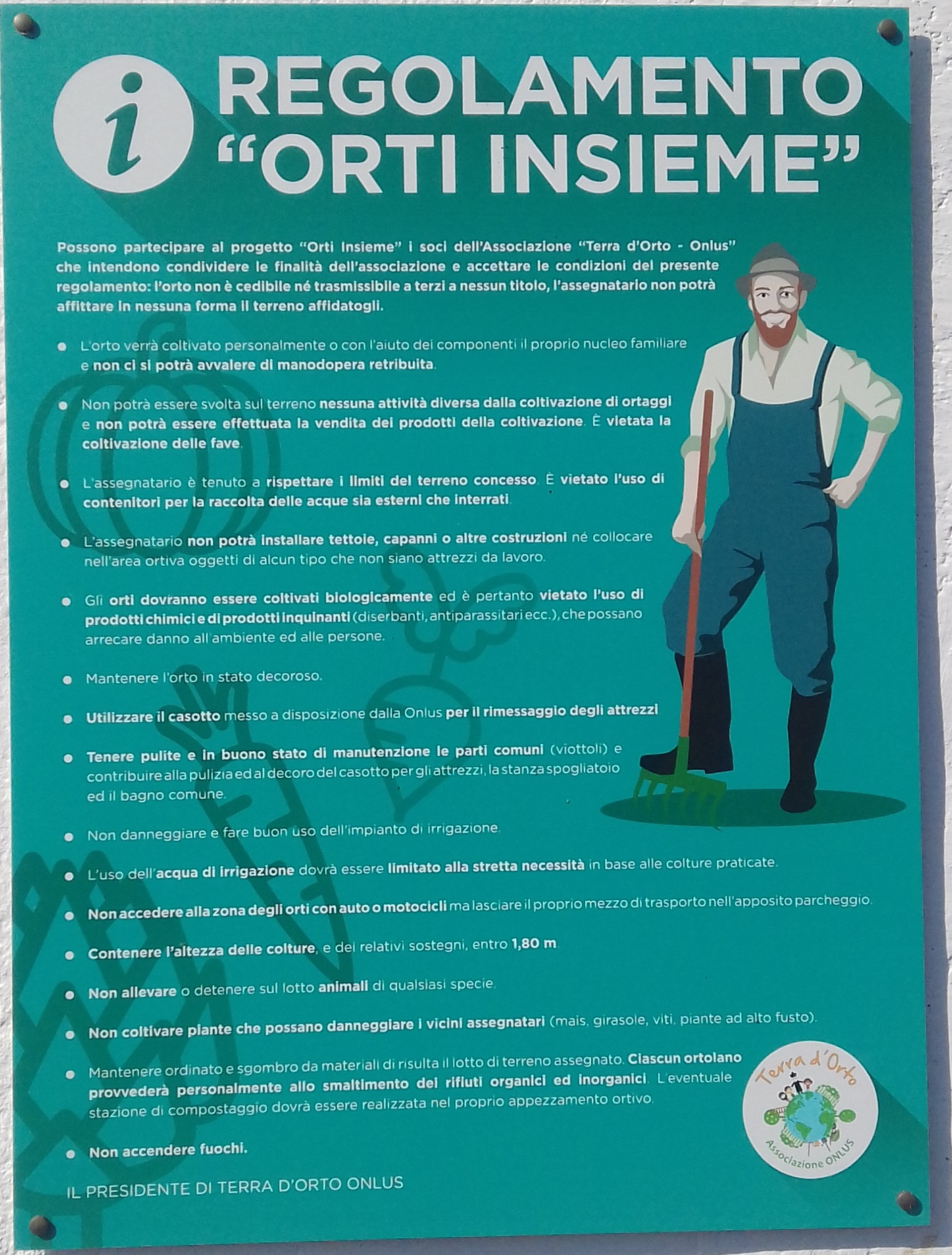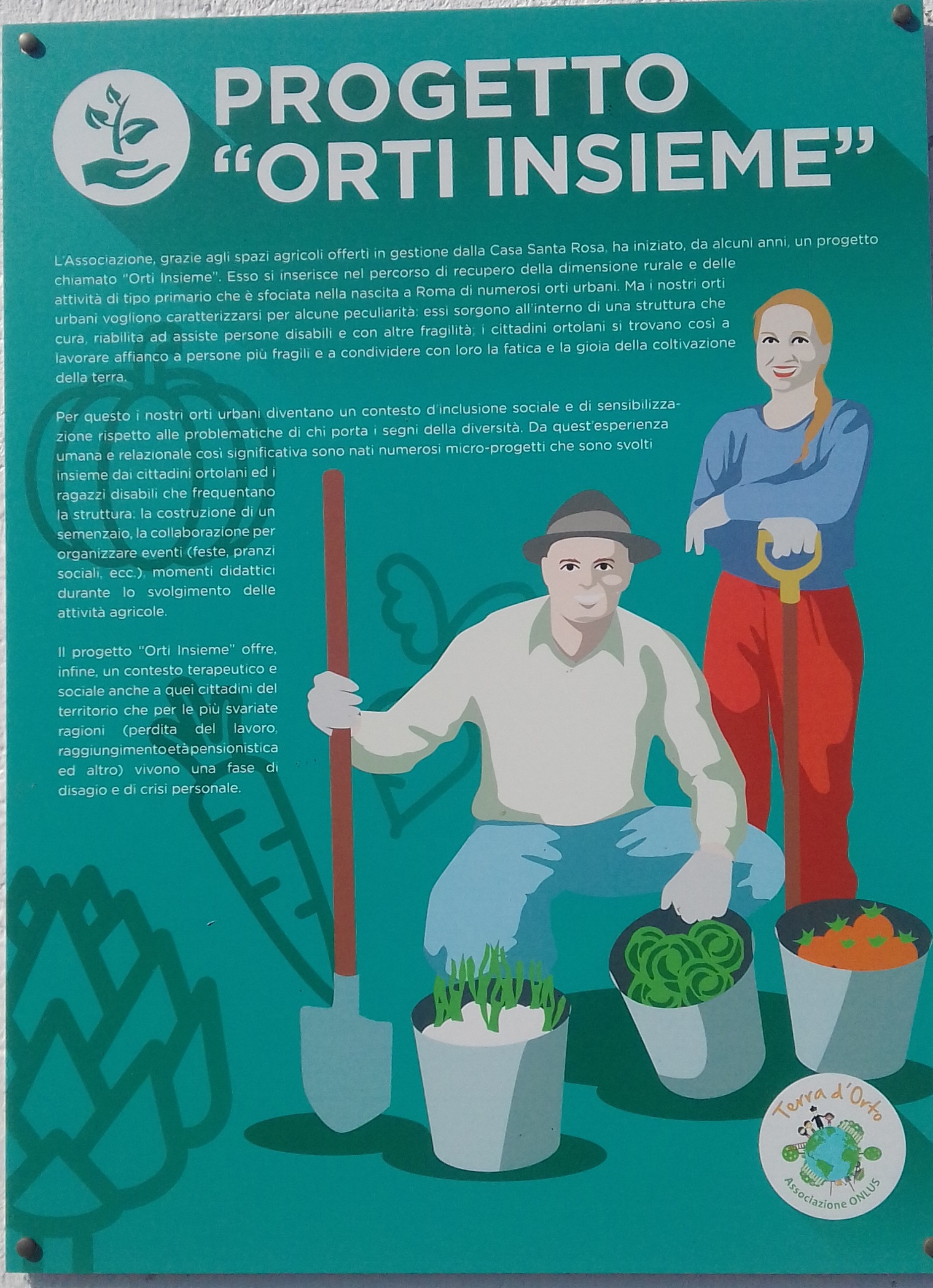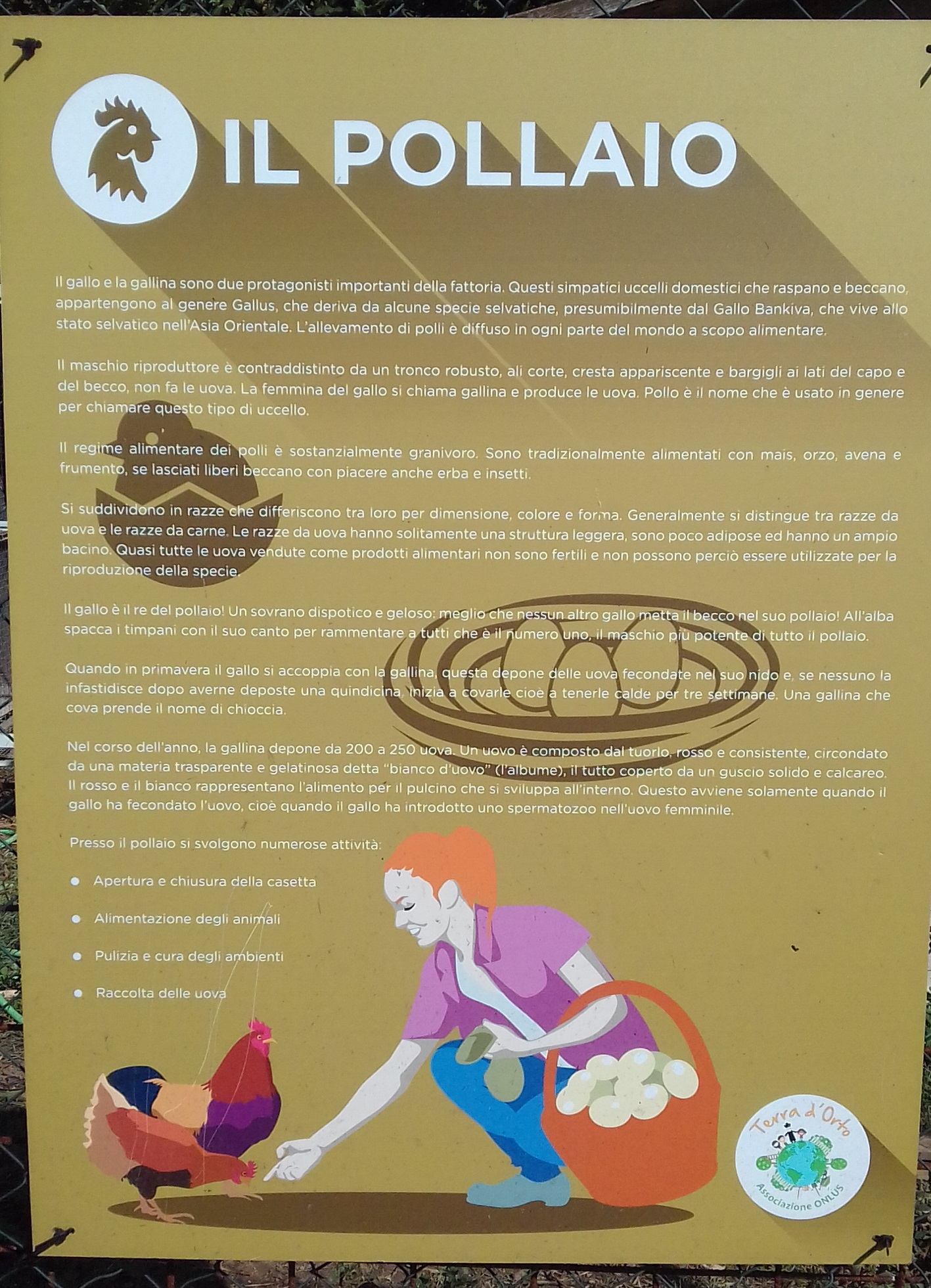Agricultura
social em Roma
Casa Santa Rosa - Centro de Reabilitação
Via Talarchiana (Via Appia Pignatelli 203)
|
Social
Agriculture in Rome
Casa Santa Rosa - Rehabilitation Center
Via Talarchiana (203 Via Appia Pignatelli)
|
|
Visita recomendada
pela Profa. Silvia Paolini, agrônoma e educadora em projetos de
agricultura social e terapêutica ligada à ONG Aicare Itália
|
Visit recommended by
Prof. Silvia Paolini, agronomist and educator in social and
therapeutic agriculture projects linked to the NGO Aicare Italia
|
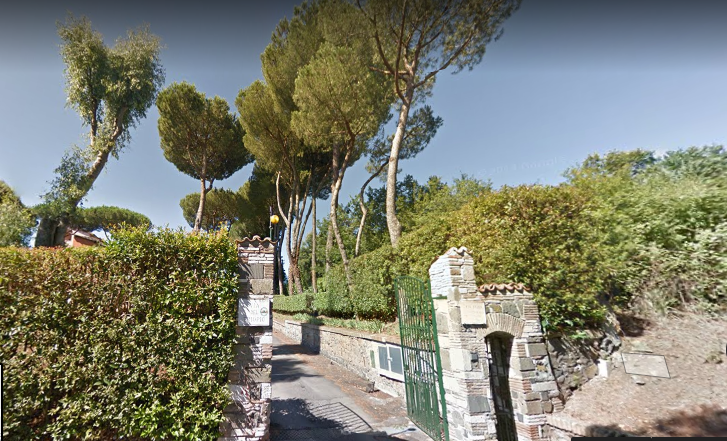

|
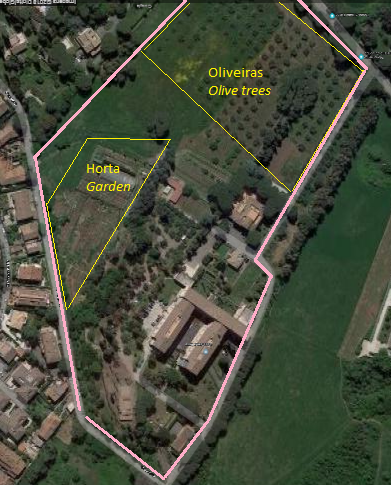
|
A
Casa Rosa é uma instituição ligada à Igreja Católica, criada em 1946
com recursos doados por organizações similares dos EUA, para ajudar na recuperação de
mulheres e meninas que passaram por experiências traumáticas durante a
2a Guerra Mundial.
Ocupa uma imensa área na periferia de Roma.
Acima,
a entrada e foto aérea mostrando as instalações e as áreas de cultivo
com finalidades sociais e terapêuticas.
Abaixo,
um dos muitos prédios e a entrada da "Opera Feminile Don Luigi Guanella.
|
Casa Rosa is an
institution linked to the Catholic Church, created in 1946 with
resources donated by American similar organizations to help recover women and
girls who have experienced traumatic experiences during World War II.
It occupies a huge area on the outskirts of Rome.
Above,
the entrance and aerial photo showing the facilities and the areas of
cultivation with social and therapeutic purposes.
Below,
one of the many buildings and the entrance of the "Opera Feminile Don
Luigi Guanella.
|
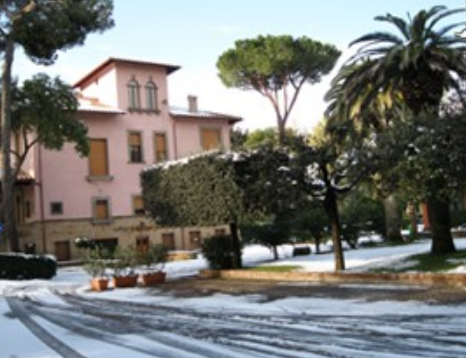
|
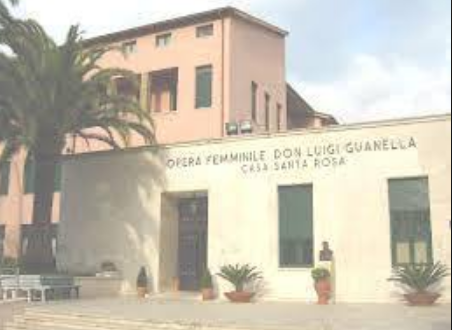
|
|
No
dia da visita, Silvia Paolini recebia um grupo com cerca de dez
participantes - na maioria mulheres - inscritas no curso de cultivos
fitoterápicos e tradicionais. A prática do dia foi a coleta de
azeitonas do pomar de oliveiras para confecção de azeite.
|
On the day of the
visit, Silvia Paolini received a group of about ten participants -
mostly women - enrolled in the course of herbal and traditional crops.
The practice of the day was the collection of olives from the olive
orchard to make olive oil.
|
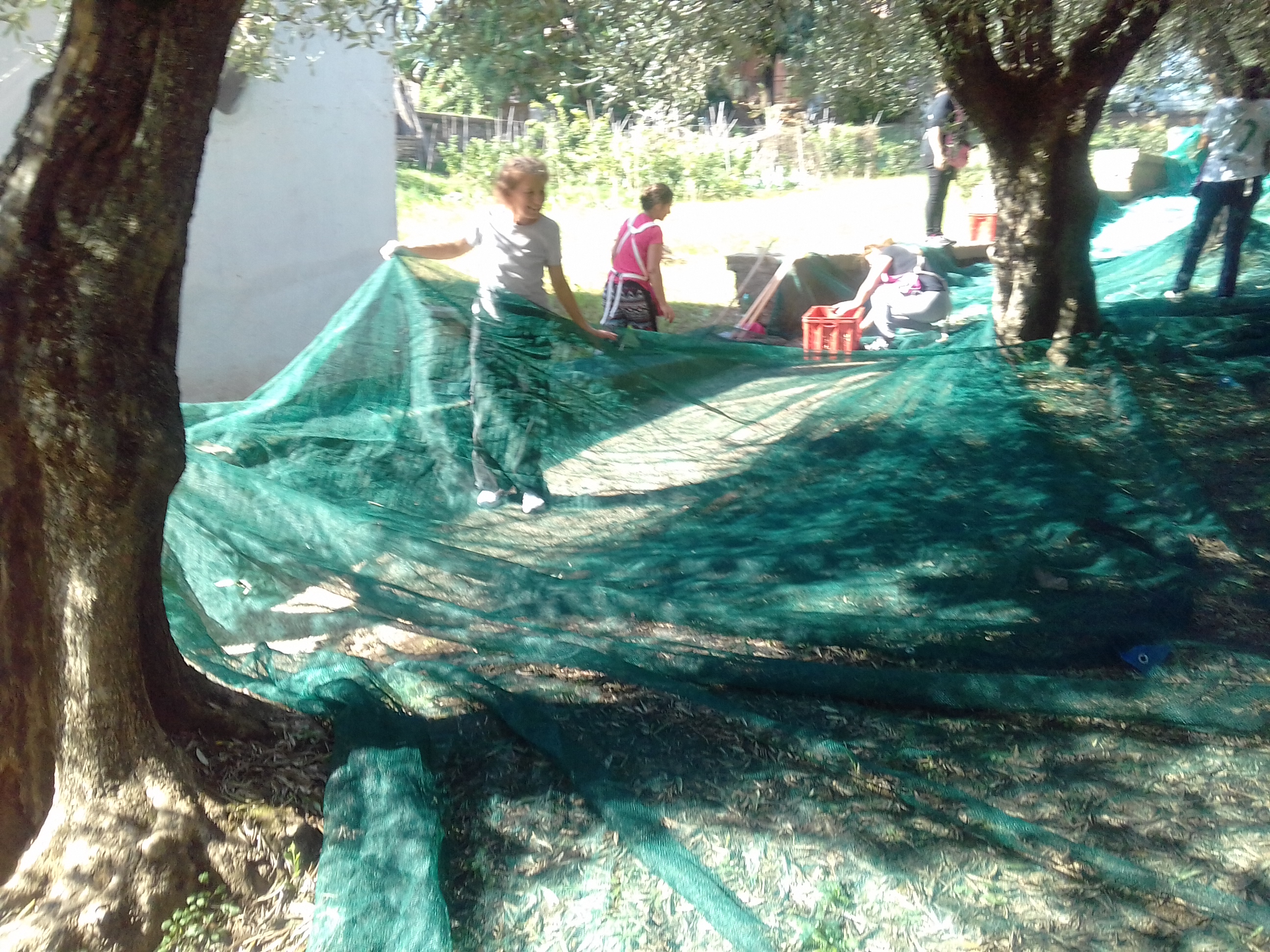
|
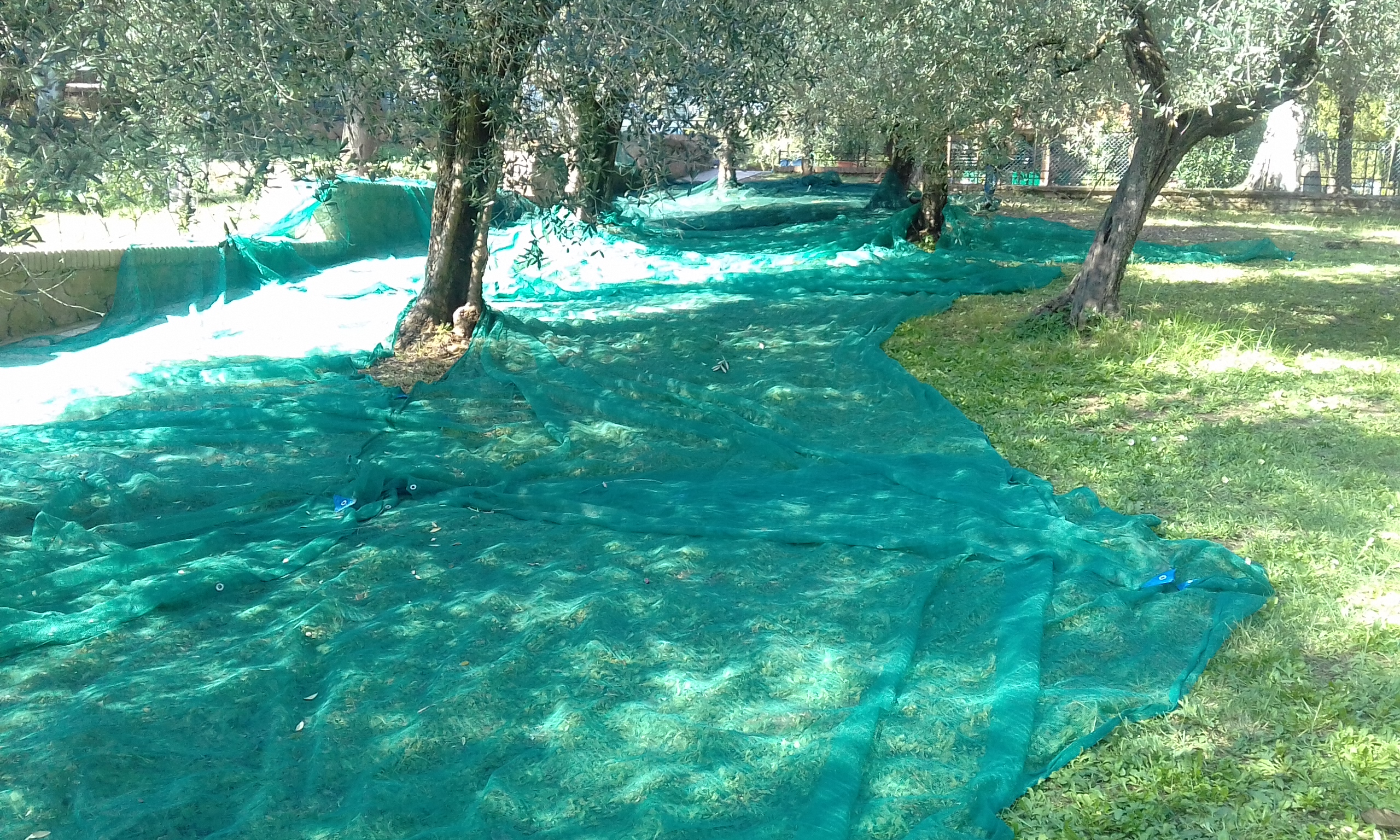
|
Acima, a
primeira ação da colheita é cobrir o chão com um tecido (sintético)
para facilitar a coleta das azeitonas.
Abaixo,
a colheita é facilitada com o uso de garfos plásticos presos a varas de
madeira de diversos tamanhos, conforme a altura dos galhos.
|
Above, the
first action of the harvest is to cover the ground with a fabric
(synthetic) to facilitate the collection of the olives.
Below,
harvesting is facilitated by the use of plastic forks attached to wooden sticks
of various sizes, depending on the height of the branches.
|
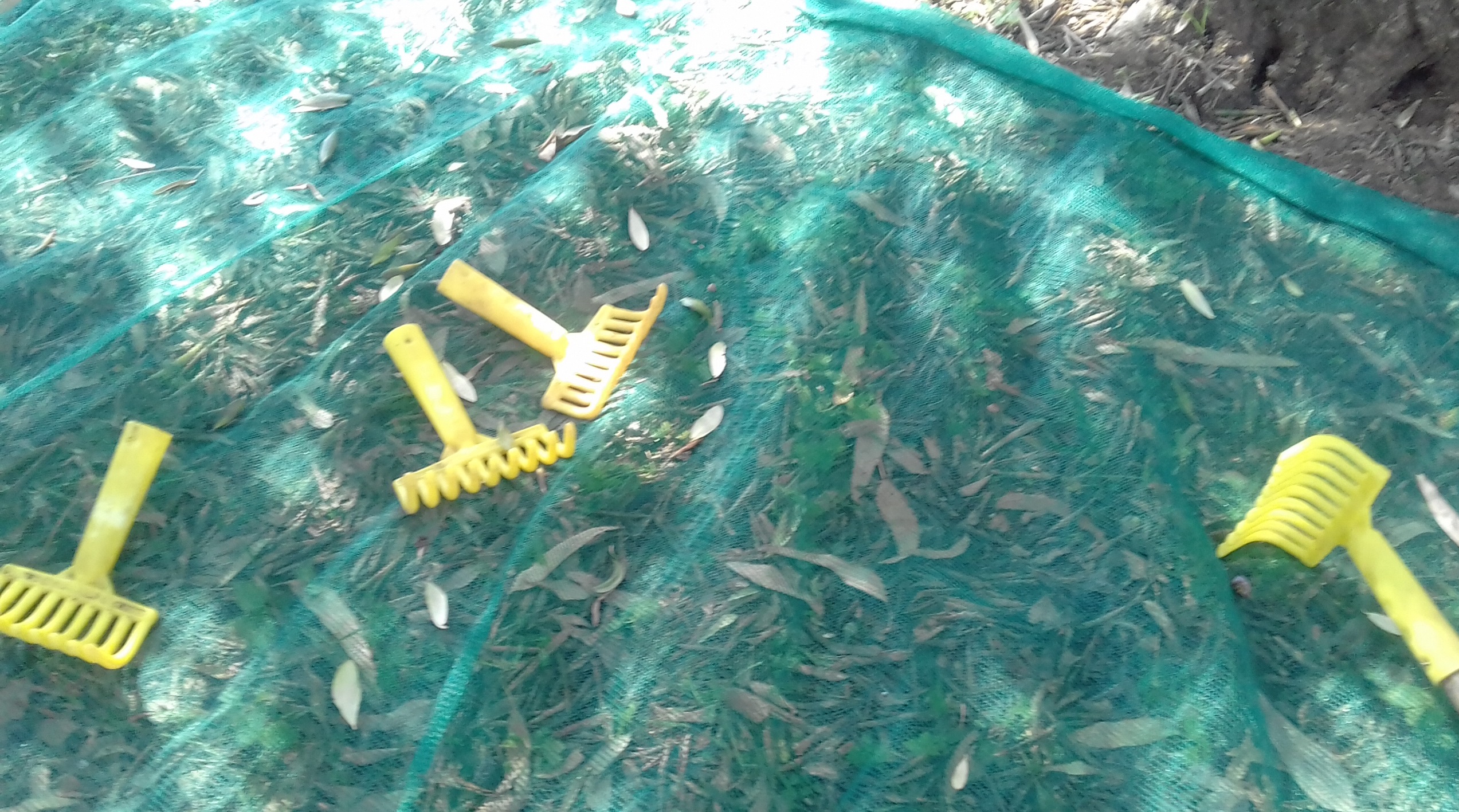 |
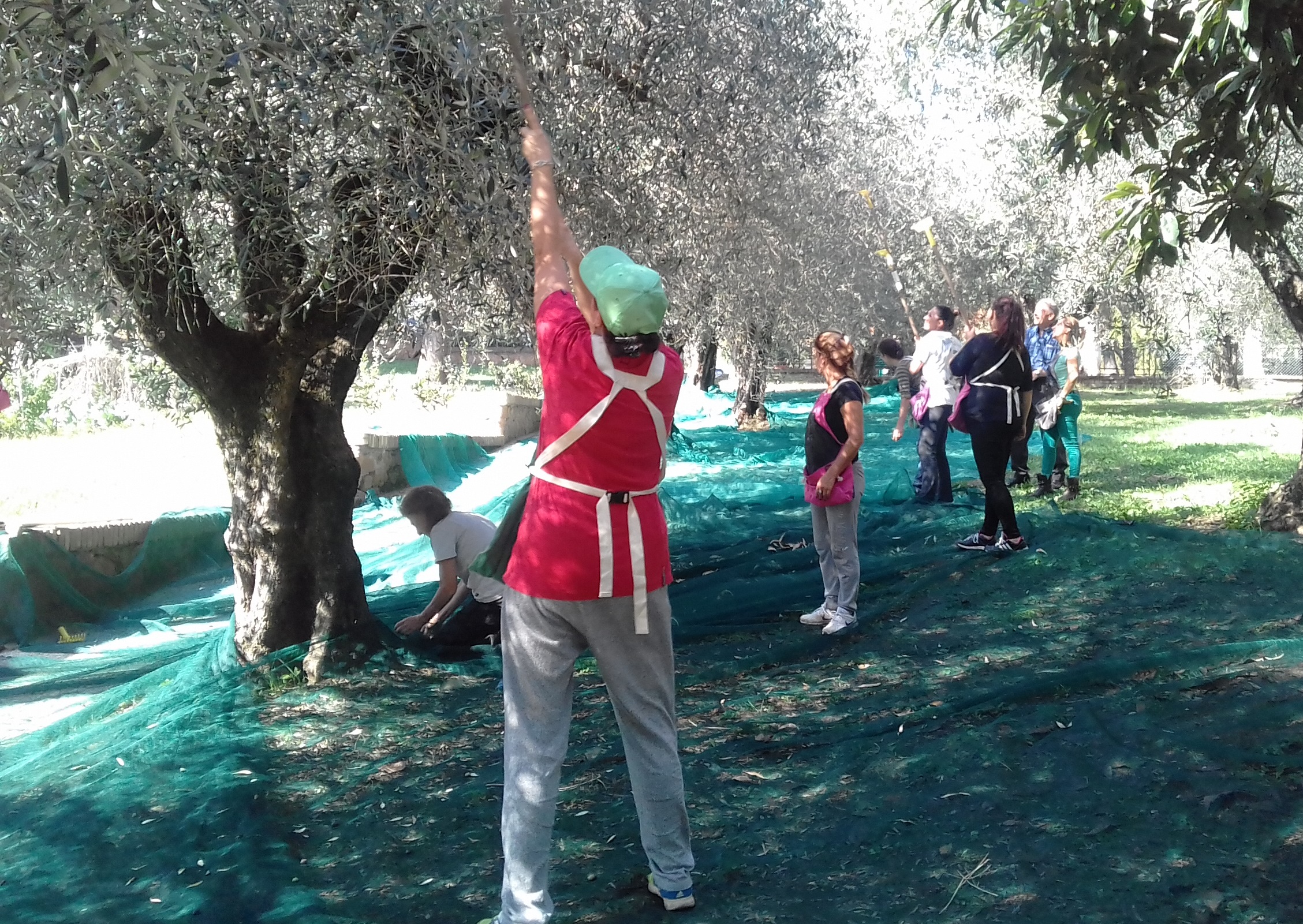 |
Abaixo,
outro recurso importante para aumentar a produtividade da colheita é um
avental com dois bolsos: o maior, para ir juntando as azeitonas
colhidas, e um menor para ferramentas e outros apetrechos.
|
Below,
another important feature to increase crop yield is a two-pocket apron:
the larger one to collect the harvested olives, and a smaller one for
tools and other paraphernalia
|
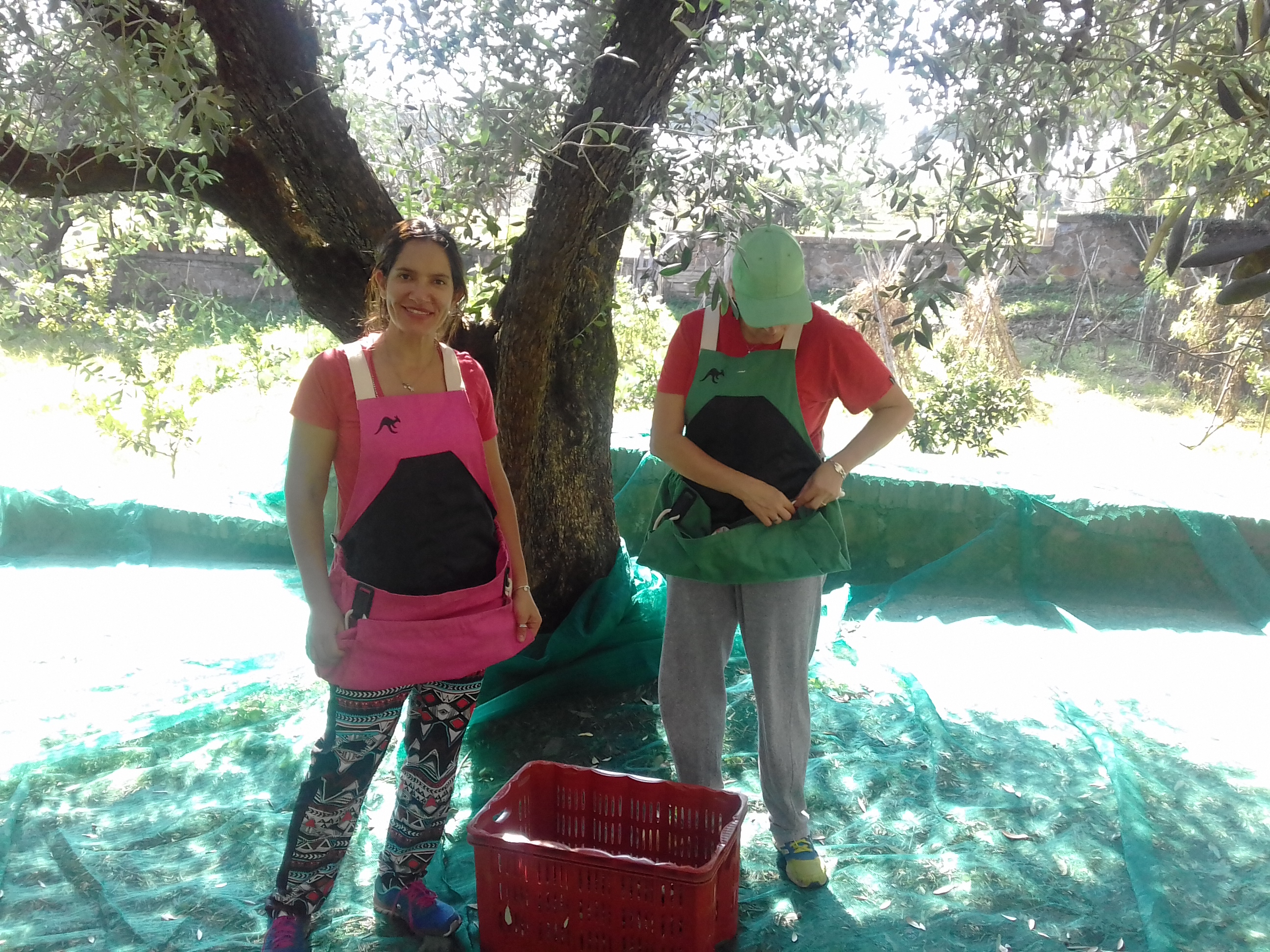 |
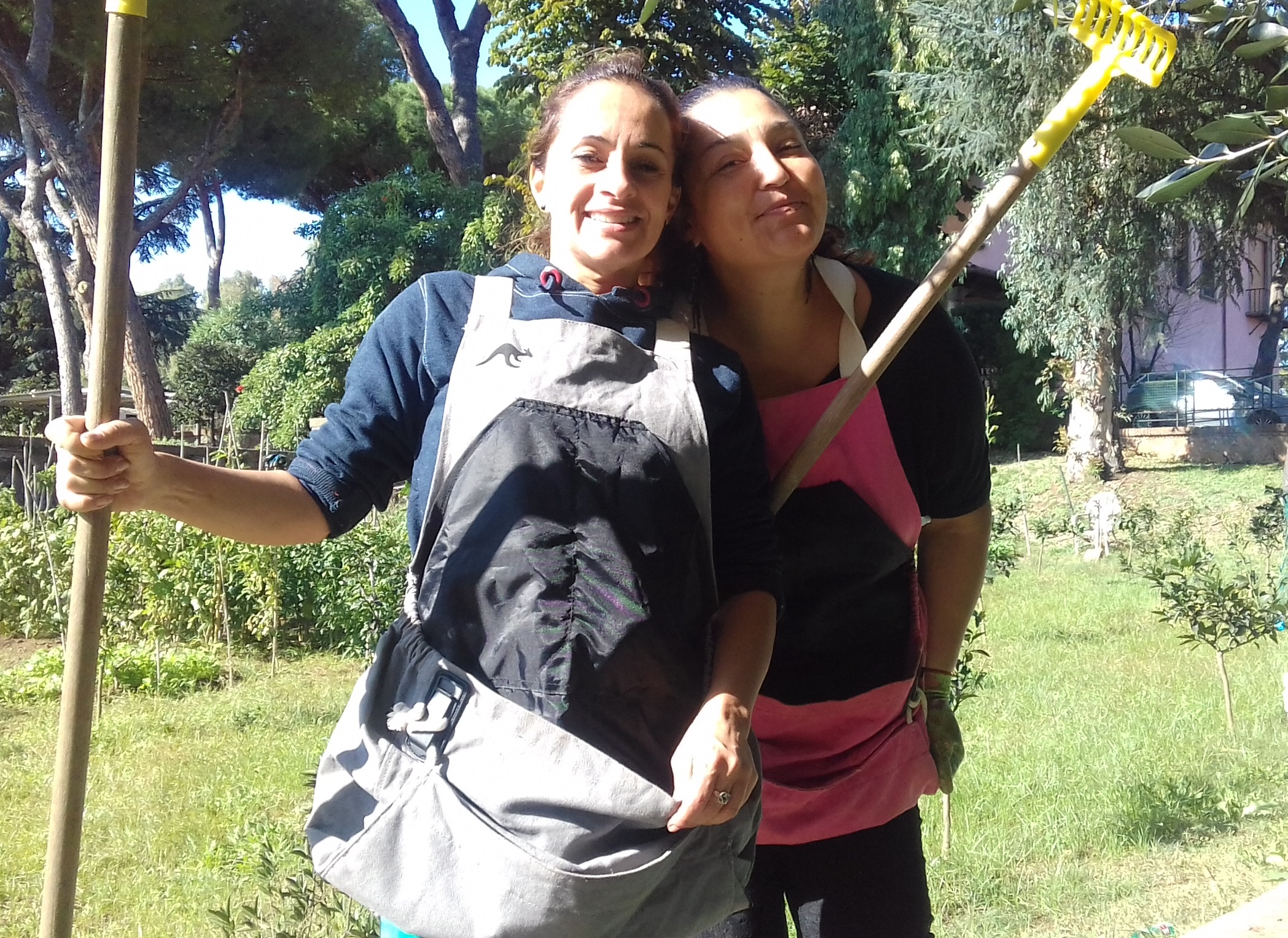 |
|
 |
Acima,
outra iniciativa de Silvia Paolini: a introdução da compostagem
sistemática nas áreas de cultivo da Casa Rosa, demonstrando dois
sistemas de produção de fertilizante orgânico: a deposição dos
materiais em pilhas (montes), à esquerda, e dentro de cilindros de tela de arame
(à direita, quase invisível).
A ideia de Silvia é convencer a administração da Casa Rosa a encaminhar
os resíduos orgânicos de sua cozinha e restaurante para as áreas de
produção agrícola da instituição.
|
Above,
another initiative by Silvia Paolini: the introduction of systematic omposting in the Casa Rosa cultivation areas, demonstrating two
systems of organic fertilizer production: the deposition of materials
in piles (heaps), on the left, and inside wire mesh cylinders on the right (almost
invisible).
Silvia's
idea is to convince Casa Rosa's administration to send the organic
waste from its kitchen and restaurant to the agricultural production
areas of the institution.
|
|
Abaixo, a
horta social e
terapêutica, dividida em cerca de 40 parcelas medindo entre 50 e 100 m2
cada. As práticas de cultivo agroecológicas são recomendadas, embora
alguns hortelões ainda precisem ser convencidos das inconveniências do
uso de insumos e pesticidas químicos. A produção não pode ser vendida,
mas as trocas de produtos são estimuladas.
|
Below, the
social and therapeutic garden, divided into about 40 plots measuring
between 50 and 100 m2 each. Agroecological farming practices are
recommended, although some gardeners still need to be convinced of the
inconveniences of using chemical inputs and pesticides. Production can
not be sold, but product exchanges are stimulated.
|
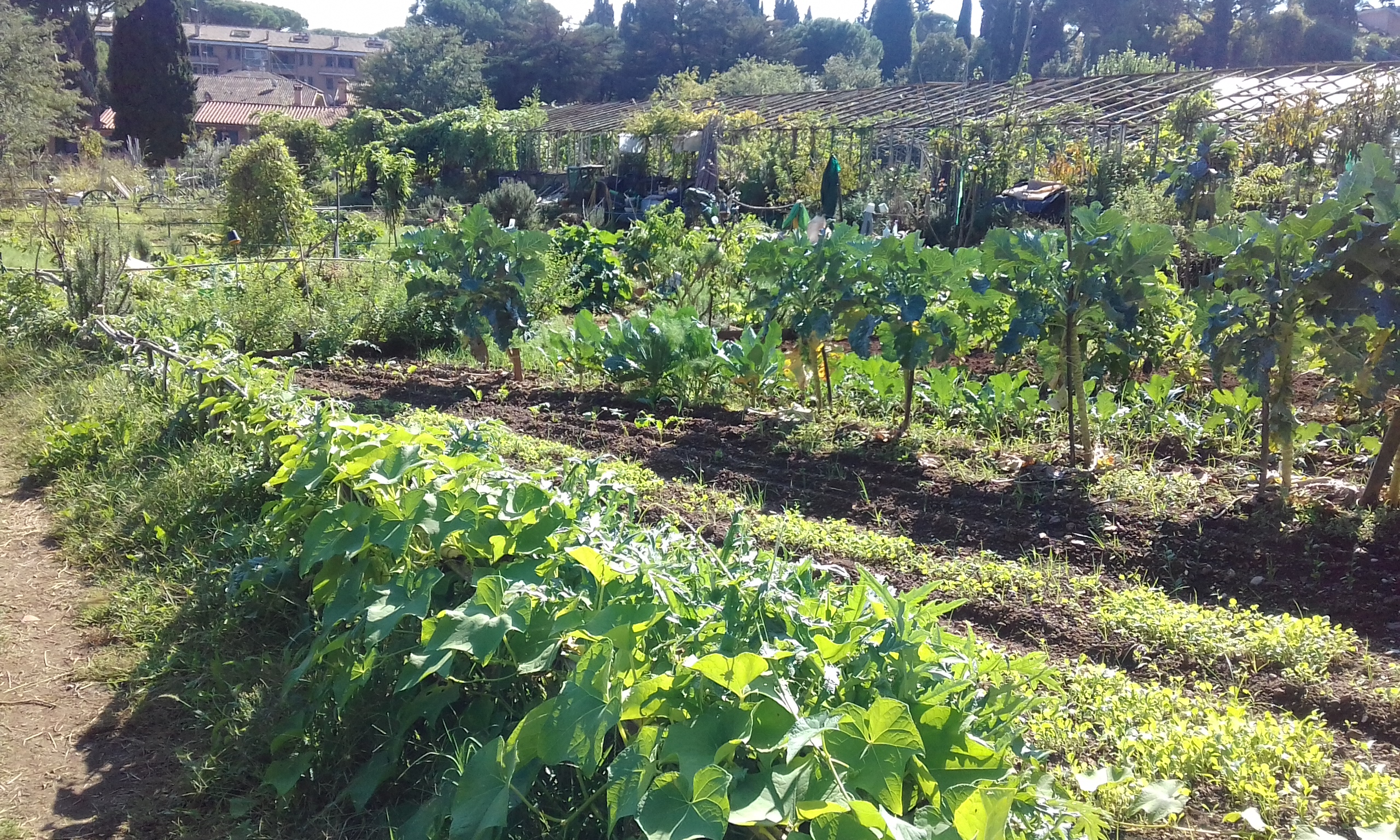 |
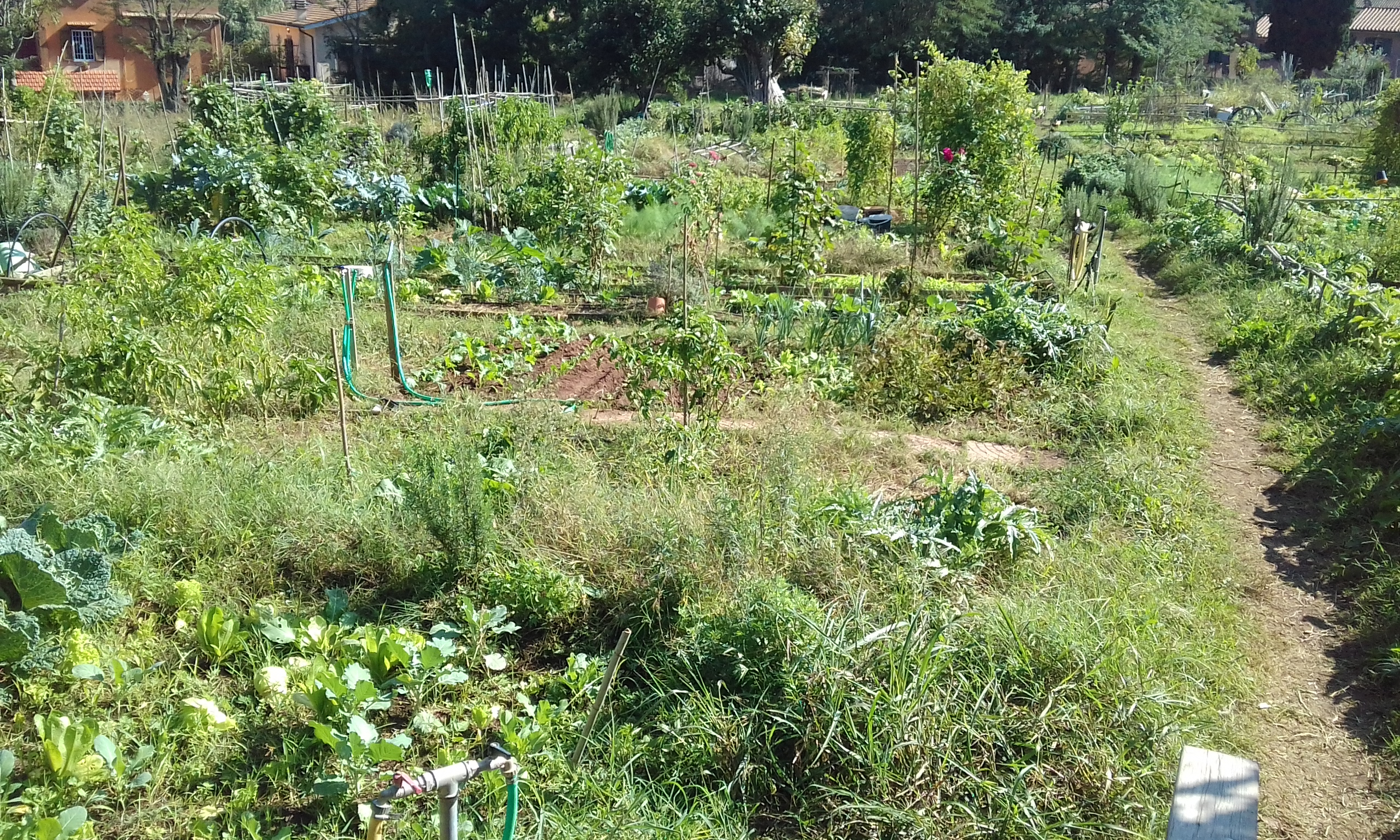
|
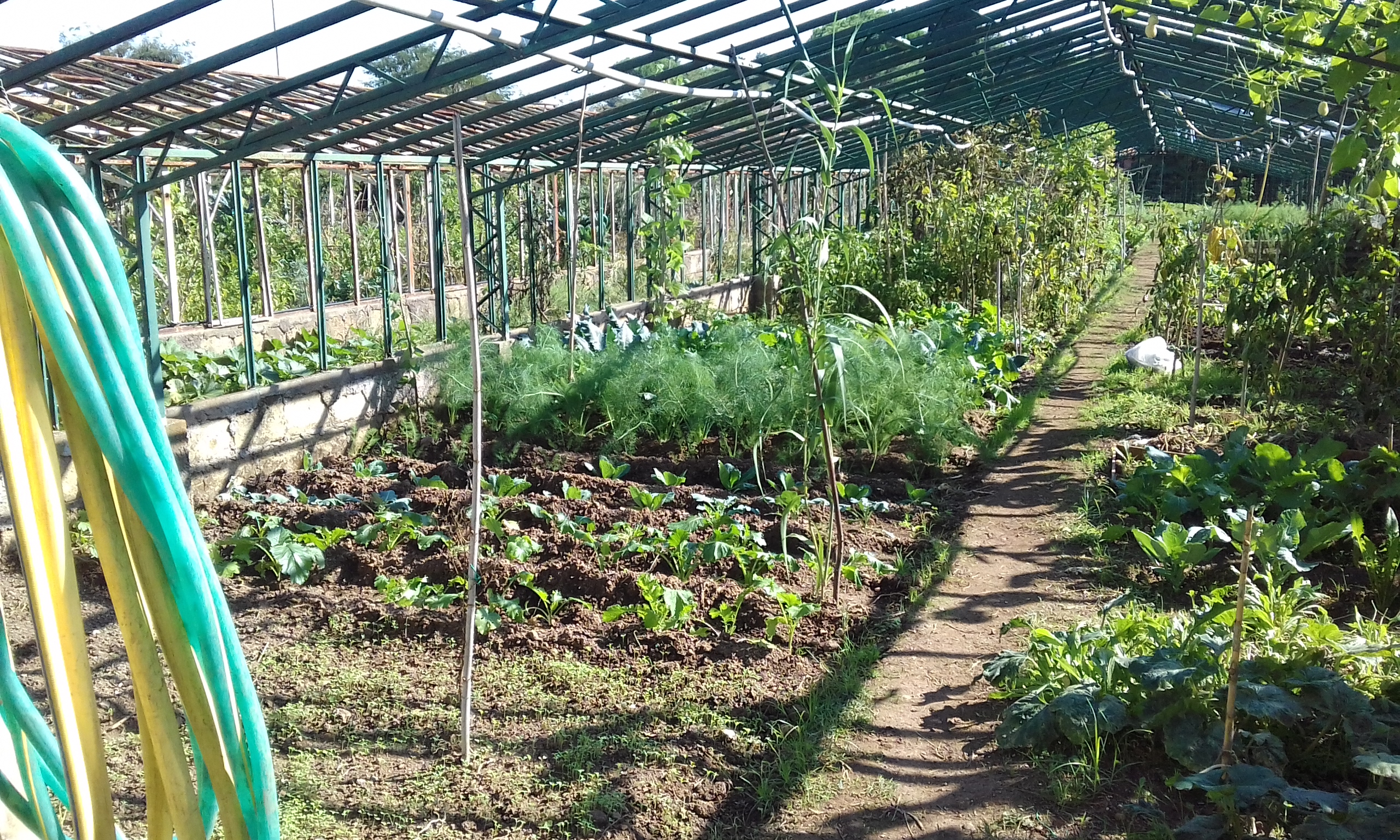 |
Acima,
algumas parcelas foram cobertas para permitir cultivos durante todo o
ano Abaixo, experiência com plantio biointensivo, consorciando várias
espécies no mesmo canteiro. A ideia é experimentar o usode mulch (cobertura morta) e parte dos
canteiros para comparar o resultado com as plantas cultivadas no solo
exposto diretamente ao sol.
|
Above, some
plots were covered to allow year-round cultivation. Below,
experiment with biointensive planting, consorting several species in
the same bed. The idea is to try to use mulch on part of the
beds to compare the result with the plants grown in the soil exposed
directly to the sun.
|

|
|
Educomunicação...
Três
exemplos de grandes cartazes que explicam a finalidade e métodos da
horta comunitária e informam sobre os pequenos animais
criados no local.
|
Educommunication...
Three
examples of large posters explaining the purpose and methods of the
community garden and informing about the small animals raised on the
site.
|
|
|
|
Três exemplos de compostagem sistemática
Uma nova pilha
é preparada oor mês, para ser usada 3 ou 4 meses depois.
|
Three
examples of systematic composting
A new heap is
prepared each month, ready to be used 3 or 4 months later.
|
.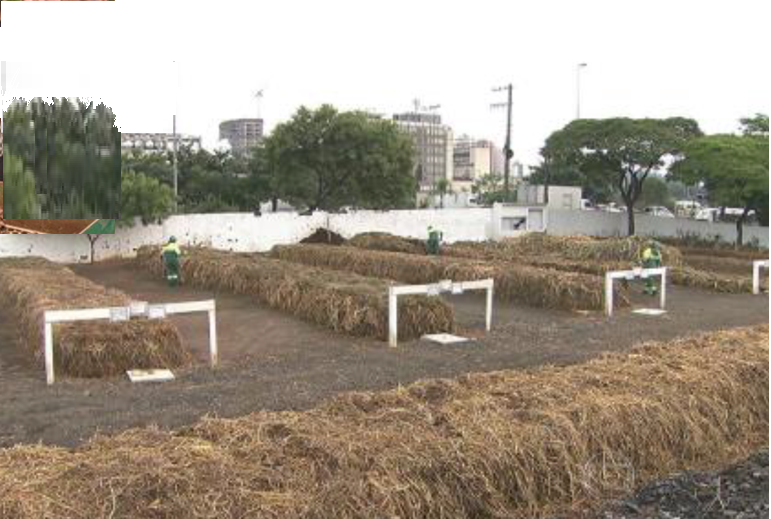 |
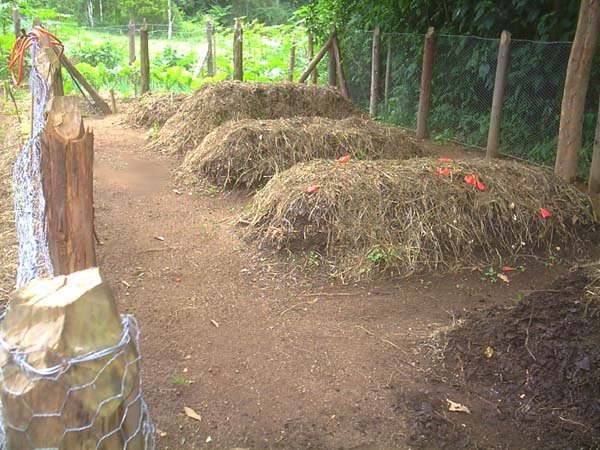
|
Acima, pátio de
compostagem para restos de feiras-livres na cidade de São Paulo (2016)
e minicental de compostagem comunitária em Visconde de Mauá (2015)
Abaixo,
central de compostagem no Sri Lanka (antigo Ceilão, 1947)
|
Above,
composting yard for remains of open fairs in the city of São Paulo
(2016) and minicenter of community composting in Visconde de Mauá (2015)
Below,
composting center in Sri Lanka (formerly Ceylon, 1947)
|
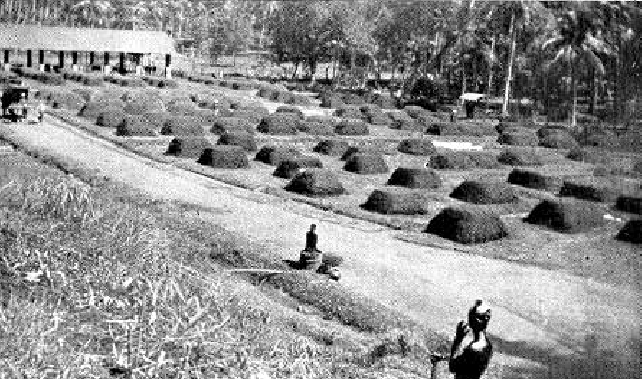
|
| Visite outros projetos de "agricultura social", na cidade do Porto, Portugal (1), em Wageningen, Holanda (2), e e em Paris, França (3). |
Visit other projects on "social agriculture", in Porto, Portugal (1), in Wageningen, the Netherlands (2), and in Paris, France (3).
|
















